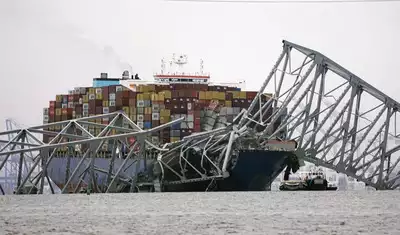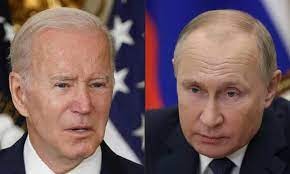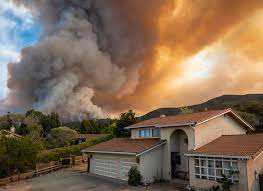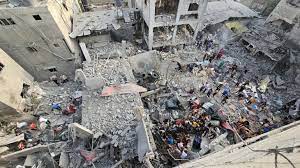Following the fall of the Baltimore bridge, divers retrieve two corpses from the harbour
In depressing news out of Baltimore Harbour, divers on Wednesday pulled the corpses of two construction workers from the frigid depths after a cargo vessel collided with the bridge and caused a catastrophic collapse.

At least four workers tragically lost their lives in the catastrophe, which opened a dark chapter in the history of the city; two more are still unaccounted for.
Colonel Roland Butler of the Maryland State Police announced the discovery of a red pickup vehicle in the middle of the fallen Francis Scott Key Bridge, buried in around 25 feet of water.
Alejandro Hernandez Fuentes, 35, of Baltimore, originally from Mexico, and Dorlian Ronial Castillo Cabrera, 26, of neighbouring Dundalk, Guatemala, were both buried in the vehicle.
The Port of Baltimore, a crucial hub in the US Eastern Seaboard’s commerce network, has been forced to cease operations due to the collapse, which occurred in the early hours of Tuesday. With the aim of determining the exact timing of the catastrophe, the National Transportation Safety Board (NTSB) has begun an inquiry into the event and has already collected the ship’s “black box” data recorder.
The desperate efforts to stop further tragedies were recorded on tape in the minutes before the accident. “Stop all vehicles using the Key Bridge. Just before the bridge collapses dramatically, an emergency responder can be heard stating, “There’s a ship approaching that just lost its steering.” Despite their best attempts, the night shift workers on the bridge, who were fixing the road’s surface, were trapped in the catastrophic collapse.
Reportedly having lost power before the accident, the Singapore-flagged container ship Dali is now moored, serving as a sobering reminder of the incident that has left Baltimore in sorrow and in chaos in terms of logistics. Much of the national economy is reliant on one of America’s busiest ports, and the collapse has raised concerns about the safety of the nation’s infrastructure.
Colonel Butler called a halt to the recovery efforts because of the hazardous circumstances created by the river’s wreckage-filled waters, while the community struggles with shock and loss. The emphasis turns to a salvage effort with the goal of freeing the victims who are still stuck in the wreckage of the bridge.
The workers who contributed to the local economy and community—many of them were immigrants from Central America—have come to light as a result of the tragedy. Their passing strikes a chord with people everywhere, stirring emotions and igniting demands for in-depth inquiries and responsibility.
A key link in the US supply chain that handles a wide variety of freight, the Port of Baltimore is now scheduled to remain closed indefinitely, and the effect of this occurrence is being felt by several industries that rely on it for their operations. Opening the port and making sure such a catastrophe never happens again will continue to be the top priorities as the NTSB and other government agencies investigate what caused the tragedy.







